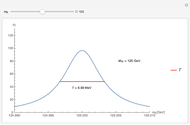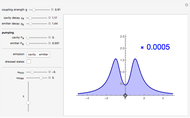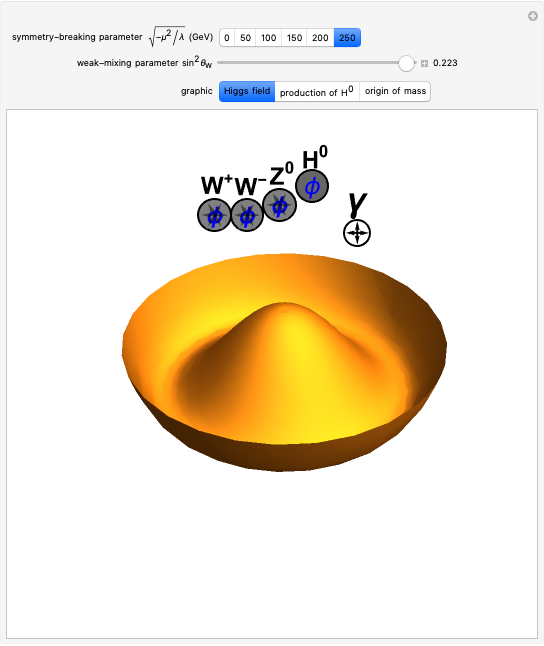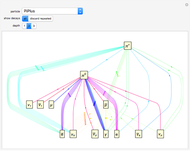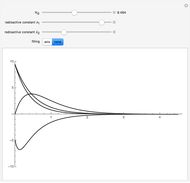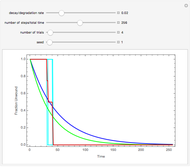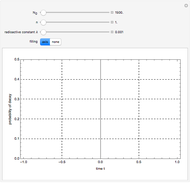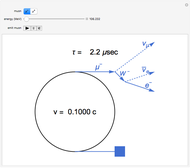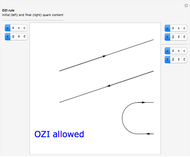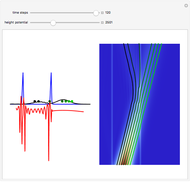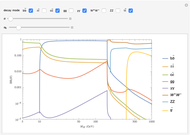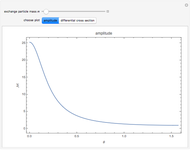Branching Ratios for Higgs Boson Decays

Requires a Wolfram Notebook System
Interact on desktop, mobile and cloud with the free Wolfram Player or other Wolfram Language products.
This Demonstration describes the variation of the Higgs boson branching ratios  , for eight different decay modes, as a function of the Higgs boson mass
, for eight different decay modes, as a function of the Higgs boson mass  . The results are obtained using first-order perturbation theory. Curves are shown for Higgs decay into pairs of gauge bosons (γ, g, Z, and W) and some fermion/anti-fermion pairs (τ, c, b, t), for different values of the coupling constants
. The results are obtained using first-order perturbation theory. Curves are shown for Higgs decay into pairs of gauge bosons (γ, g, Z, and W) and some fermion/anti-fermion pairs (τ, c, b, t), for different values of the coupling constants  ,
,  , and
, and  . This is, in fact, a simple simulation of what the world might look like if
. This is, in fact, a simple simulation of what the world might look like if  and
and  . The effects of the coupling strengths on particle masses are not considered. You can display any one or combination of decay modes by marking the corresponding checkboxes.
. The effects of the coupling strengths on particle masses are not considered. You can display any one or combination of decay modes by marking the corresponding checkboxes.
Contributed by: Caique Ronqui (December 2014)
Open content licensed under CC BY-NC-SA
Snapshots
Details
References
[1] M. E. Peskin and D. V. Schroeder, An Introduction to Quantum Field Theory, Boulder, CO: Westview Press, 2005. westviewpress.com/books/an-introduction-to-quantum-field-theory.
[2] V. D. Barger and R. J. N. Phillips, Collider Physics, updated ed., Reading, MA: Addison-Wesley, 1997.
Permanent Citation
"Branching Ratios for Higgs Boson Decays"
http://demonstrations.wolfram.com/BranchingRatiosForHiggsBosonDecays/
Wolfram Demonstrations Project
Published: December 11 2014






